One hundred ninety-one: Opioid manufacturers and distributors sold that many pills in bulk in Vermont for every man, woman and child during the seven-year period that ended in 2012.
The total tally of oxycodone and hydrocodone pills sold at wholesale in the Green Mountains during that period was a whopping 119,480,773.
The figures come from a database released this week by the U.S. Drug Enforcement Administration detailing itemized purchases of prescription opioids in the U.S. from 2006 through 2012. The dataset offers an unprecedented window into the pharmaceutical industry's business dealings as the opioid crisis grew.
Oxycodone and hydrocodone purchases peaked in 2011 at 18.2 million pills. That same year, Vermont medical providers
wrote 502,566 prescriptions for opioids in a state with a population of just under 627,000.
Manufacturers and distributors are required to report transactions involving controlled substances to the DEA. The agency released the dataset, which contains hundreds of millions of opioid transactions, as a result of a lawsuit filed by the
Washington Post and the
Charleston Gazette-Mail in West Virginia.
On Thursday,
the Post published the raw data detailing oxycodone and hydrocodone sales from 380 million transactions. The
Post did not include data on 10 other prescribed opioids that were distributed in far smaller amounts and were less likely to be diverted.
The data shed light on the closely guarded prescription opioid market during a critical point in the opioid crisis. Oxycontin and other prescription opioids surpassed illicit heroin as the primary source of opioid addiction for those receiving drug abuse treatment in 2006,
according to the Vermont Department of Health.
Nationally, the number of opioid prescriptions peaked in 2012, when doctors wrote
81.3 prescriptions for every 100 U.S. residents.
The database does not reveal sales to end users, however. So though it tracks the flow of prescription opioids into Vermont, not every pill was necessarily distributed to a consumer.
The largest Vermont-based purchaser, according to the database, was HealthDirect Institutional Pharmacy, which provides pharmacy services to correctional and elder care facilities, as well as other institutions. HealthDirect bought 3.9 million pills over that seven-year period — more than 3.1 million of those in May 2008, according to the federal data. The company is owned by KPH Healthcare Services, which also owns Kinney Drugs.
The company is a large institutional purchaser with offices in eight states, so the drugs it purchased may not have stayed within Vermont. Because it’s not a pharmacy, doctor’s office or retailer,
Seven Days excluded that data from our analysis.
The top distributor of opioid pills into the state between 2006 and 2012 was McKesson. The San Francisco-based pharmaceutical distributor sold just over 40 million pills to Vermont-based buyers during that time — nearly twice as many pills as the next largest distributor, Cardinal Health.
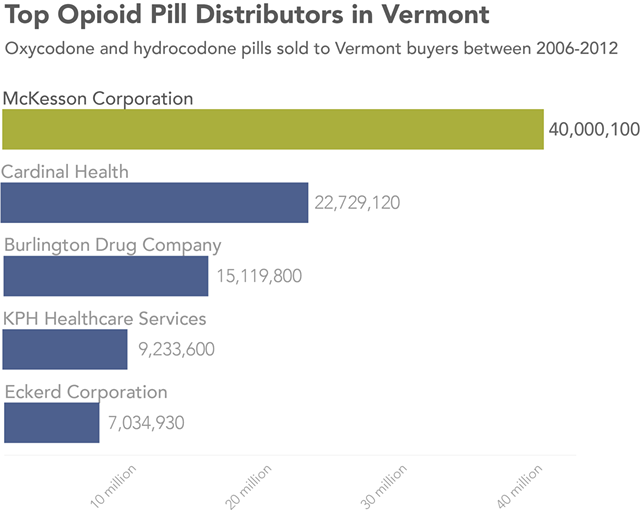
- Andrea Suozzo
- Source: DEA database/Washington Post
The top manufacturer of those pills was SpecGx, a subsidiary of U.K. pharma giant Mallinckrodt, which manufactured nearly 49 million of the pills Vermont-based companies purchased. Though Purdue Pharma has garnered many of the headlines — and lawsuits — over its role in the opioid crisis, it supplied just 5.1 percent of the oxycodone and hydrocodone pills tallied in the database.
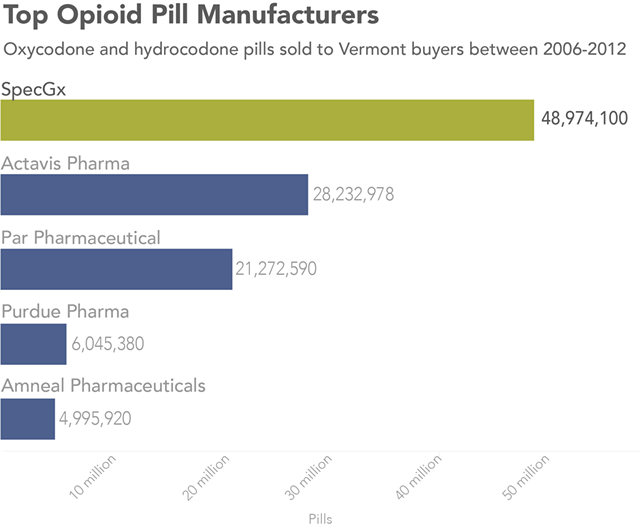
- Andrea Suozzo
- Source: DEA database/Washington Post
Between 2006 and 2012, the University of Vermont Medical Center's Burlington location purchased the highest number of opioid pills, at 3.4 million. (Its Colchester outpatient location purchased an additional 1.1 million pills.)
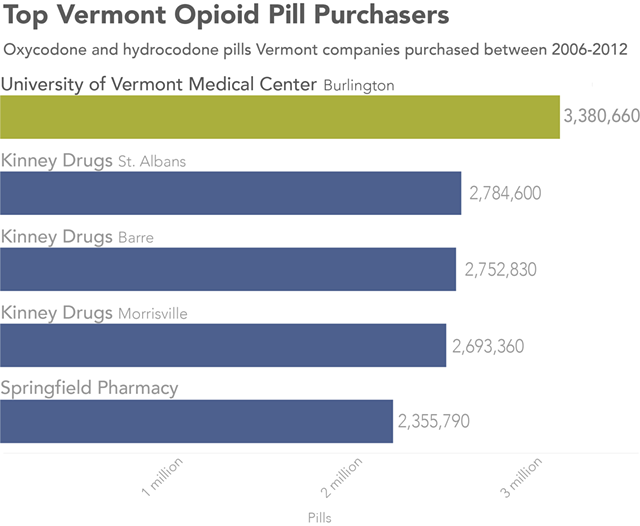
- Andrea Suozzo
- Source: DEA database/Washington Post
At the county level, Windham pharmacies and medical facilities stocked 35.6 opioid pills per person each year between 2006 and 2012, for a total of 11.1 million pills. Franklin, Bennington, Lamoille, Washington and Chittenden counties also came in above the statewide average of 27.3 pills per person per year.
On the low end, Grand Isle businesses stocked 7.9 pills per person, while Essex businesses stocked 1.6. That doesn’t mean people in those counties weren’t receiving and filling prescriptions, though. The residents of those lightly populated areas likely headed to pharmacies and doctor’s offices in other counties.
In fact, the only businesses ordering opioid prescription drugs in Essex County during that time were the Island Pond Health Center and a veterinary clinic. Here's a look at how Vermont's counties compared:

- Andrea Suozzo
- DEA database/Washington Post/U.S. Census Bureau












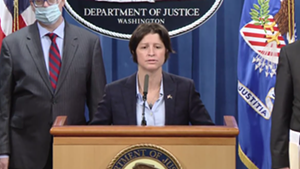
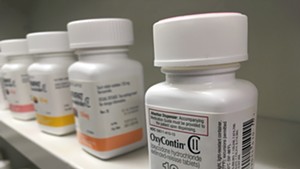

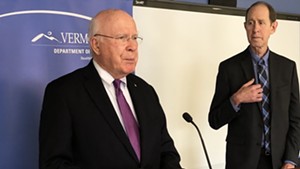





Comments (13)
Showing 1-13 of 13
Comments are closed.
From 2014-2020, Seven Days allowed readers to comment on all stories posted on our website. While we've appreciated the suggestions and insights, right now Seven Days is prioritizing our core mission — producing high-quality, responsible local journalism — over moderating online debates between readers.
To criticize, correct or praise our reporting, please send us a letter to the editor or send us a tip. We’ll check it out and report the results.
Online comments may return when we have better tech tools for managing them. Thanks for reading.